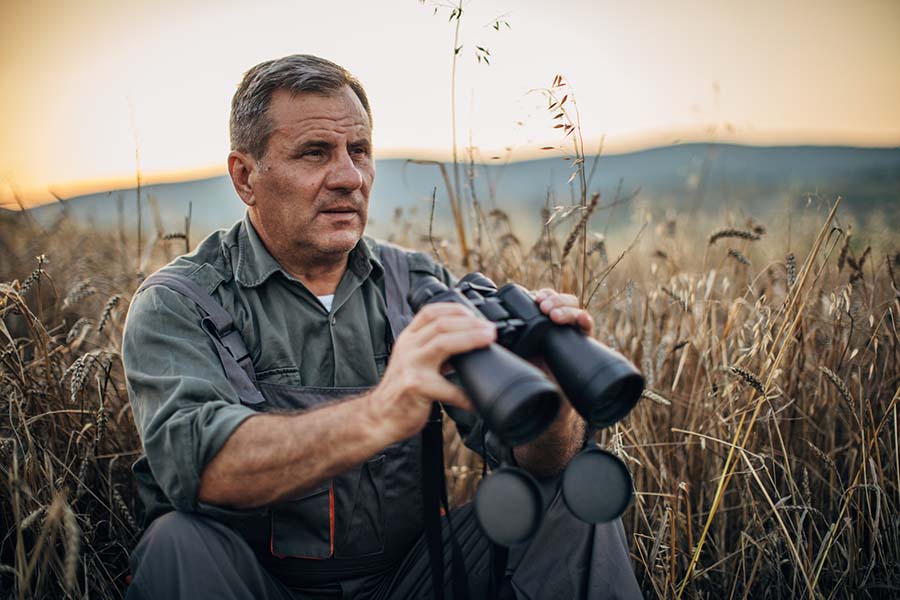There’s a key distinction that separates a simple pond that ducks like to visit from a high-performance waterfowl impoundment: strategic intent. This guide is written for the landowner or manager who is ready to move beyond hoping for good results and is prepared to engineer a system that delivers them.
Your goal may be to create a premier hunting property, a thriving ecological sanctuary, or both; however, both approaches require careful and intentional planning. When designed with clear objectives, your impoundment becomes a powerful conservation tool as well as a lasting improvement to your property.
This leads us to the core principle of a modern impoundment: active management. The most effective way to think about it is as a form of specialized agriculture where you, as the manager, actively cultivate the ideal conditions—food, water, and cover—to reliably attract and hold waterfowl. In this e-book, we’ll present the fundamentals you need to design, build, and manage a dynamic system for long-term success.
First: A Clear-Eyed Assessment of Your Goals
Every decision you make—from the height of your berms to the timing of your first flood—will flow from your primary objective. While a single impoundment can serve multiple functions, you must begin with an honest assessment of your specific ambitions.
For example, a hunting-focused impoundment requires a distinctly different approach compared to a bird sanctuary. If your focus is hunting, are you managing for early-season teal, which requires shallow water and specific native plants ready in September? Or are you aiming for late-season mallards, which demand high-energy grains like corn or rice and the ability to manage ice? The management strategies for these two goals differ significantly.
On the other hand, an ecology-focused impoundment might prioritize creating brood-rearing habitat for wood ducks, which requires dense overhead cover and a healthy invertebrate population. Or, it could be managed to provide critical stopover habitat for migrating shorebirds, who need the exposed mudflats created by a late-summer drawdown. These goals aren’t necessarily mutually exclusive, but you’ll need to define a primary objective to keep your design focused and effective.
Considering Management Intensity
Your objective will also determine how intense your management needs to be. This means being realistic about the time, effort, and resources you’re willing to commit. An ecology-focused impoundment designed to mimic natural wetland cycles may require a lower-intensity approach with just a few key interventions per year, but a premier hunting impoundment managed for maximum food production is a high-intensity endeavor. Like an active farm, it requires seasonal soil work, planting, precise water-level manipulation, and diligent pest control. Understanding where your project falls on this spectrum is a crucial factor in its success and in determining your personal satisfaction.
Second: Establishing the Impoundment as a Conservation Tool
With the continued loss of natural wetlands across North America, well-managed private impoundments have become a critical piece of the continental conservation puzzle. To be successful, your conservation project shouldn’t be just an isolated pond—after all, it will play a vital role in the vast network of the Atlantic or Mississippi Flyway. You’re creating a high-energy “rest stop” where migratory waterfowl can refuel and rest safely before continuing on their semiannual journey.
But the ecological niche your impoundment fills extends far beyond migratory birds. A healthy impoundment supports a vast diversity of local wildlife, including wading birds, shorebirds, amphibians, and pollinators, which dramatically increases the overall biodiversity and ecological resilience of your property and region.
Partners in Conservation
Fortunately, you don’t have to wade through the weeds all alone. Numerous government agencies and non-governmental organizations (NGOs) recognize the immense value of private wetland projects, offering technical and sometimes financial assistance. Organizations like Ducks Unlimited have biologists who can provide expert advice on your design. The USDA’s Natural Resources Conservation Service (NRCS) offers programs, such as the Wetlands Reserve Easement (WRE) program, that can provide significant cost-sharing for projects that meet its conservation standards. Engaging with these potential partners early in the process can bring invaluable expertise and resources to your project.
Third: The Property Value Proposition
Establishing a high-performance impoundment involves a lot more than nailing together a few nesting boxes. It requires a significant (and ongoing) investment of time and money, so it’s best to view it as a durable asset that will add tangible value to your property:
Recreational Value
A turnkey, reliable impoundment that consistently attracts waterfowl is a highly sought-after recreational feature. It creates opportunities for high-quality hunting or wildlife observation that can be privately enjoyed by a close circle of family and friends, or could be leased out for a secondary revenue stream.
Asset Value
A simple, dug pond might completely dry up during a long, hot summer or, conversely, it could require constant maintenance to control repeated algae blooms. On the other hand, a professionally engineered, lined impoundment with robust water-control structures will be a permanent piece of infrastructure that can demonstrably increase your property’s financial value.
Water as a Multi-Use Asset
A recreational feature can be a great source of fun and income. Still, and perhaps more importantly, a lined impoundment represents a reliable, on-demand water source—a tremendously valuable asset in many regions. Unlike a natural pond with water levels that fluctuate with the weather, a lined impoundment gives you control over a significant volume of water. If necessary, this water can be tapped for irrigating nearby fields, for fire suppression, or as a backup supply for other agricultural needs. These opportunities for multiple uses significantly enhance the impoundment’s utility and overall value to your property.




